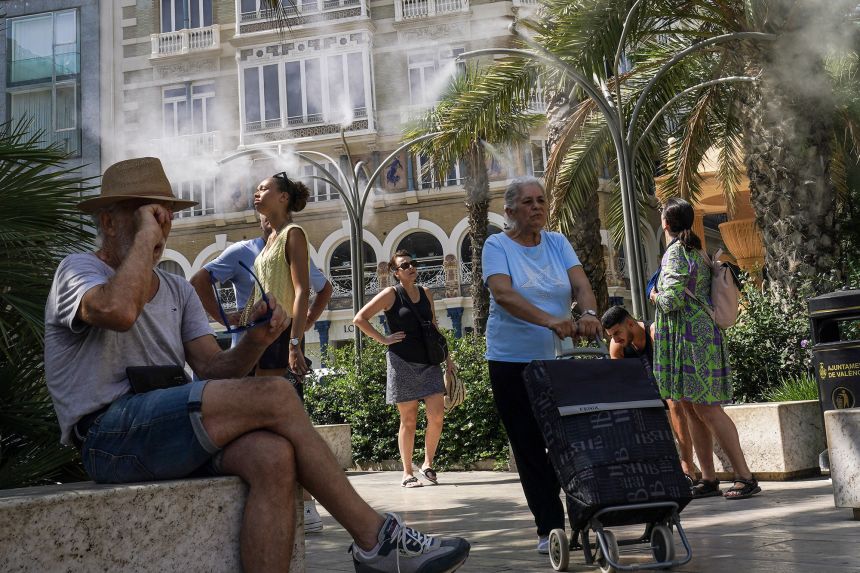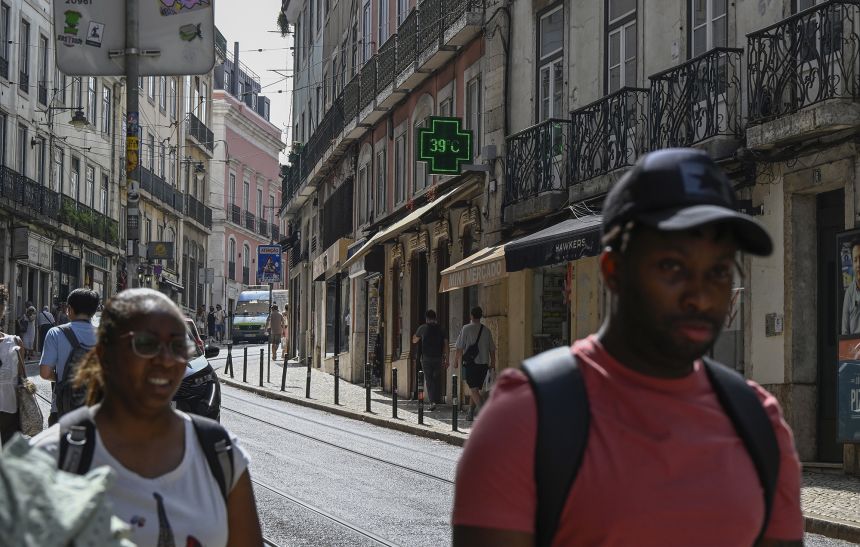Paris
CNN
—
This summer in Paris, a sunset cigarette under the Eiffel Tower could come with an unexpected price tag.
Starting July 1, France has banned smoking in all outdoor areas frequented by children — including parks, beaches, public gardens, bus stops, school entrances, and sports venues. The sweeping measure is part of President Emmanuel Macron’s pledge to create “the first tobacco-free generation” by 2032.
Lighting up in these zones could cost smokers more than a dirty look from a passerby. Those who break the rules — including unsuspecting tourists — face a fine of 90 euros if they pay within 15 days, going up to 135 euros (around $150) after that.
“France is positioning itself as one of Europe’s most proactive countries in terms of tobacco control,” Raquel Venâncio, senior policy officer at Smoke Free Partnership, a coalition of European tobacco control advocacy groups, told CNN.
While countries like Spain and Italy have introduced restrictions on smoking in certain areas at local or regional levels, France stands out as the only European country to enforce a nationwide ban against beach smoking.
But not all citizens support the new measure.
“The more time goes by, the more the government wants to take away our basic freedoms,” Elise Levaux, a 25-year-old student in Paris, told CNN. “If you’re being respectful — not throwing away cigarette butts in a park or beach, not disturbing others — I don’t see the problem. Why should smoking suddenly be treated like a crime?”
The restrictions are undoubtedly a major shift in a country long synonymous with cigarette culture. From Brigitte Bardot to Charles de Gaulle, French icons were rarely seen without a Gauloises — the archetypal French brand — in hand. “France’s intellectual circles and cinematic culture have normalized cigarettes for generations,” Venâncio observed. “For decades, there was no political will to ban smoking.”
But the national relationship with tobacco is changing.
Smoking in France is at its lowest level since the 1990s, the National Committee against Tobacco (CNCT) reports. Today, around a third of adults in France smoke, with 23% of the adult population saying they smoke daily, according to a 2024 report from the French national public health agency. Tobacco use is declining among young people, with only 16% of 17-year-olds reporting they smoke daily in 2022, the most recent data available — down from 25% six years prior.
Still, France remains one of Europe’s most tobacco-dependent countries, fueled in part by what officials have called an “explosion” in cigarette smuggling, largely from Bulgaria, Turkey, and Algeria. In 2024 alone, France consumed an estimated 18.7 billion illicit cigarettes, according to a KPMG study carried out for tobacco giant Philip Morris — accounting for a staggering 38% of tobacco use and making it the largest illicit tobacco market in Europe.
Most regular smokers begin in their teenage years, with nearly 90% of them picking up the habit before turning 18, according to the Ministry of Health.
“I’ve been smoking since I was 14,” said Jane, 25, who declined to give her last name. “Most of my friends started just as young. Fine or no fine, we’re going to continue smoking. It’s part of the French identity — we fight for what we want. We’re not robots.”
In a statement shared with CNN, Minister of Health Catherine Vautrin said that “protecting youth and denormalizing smoking” is an “absolute priority” for the government. “At 17, you should be building your future, not your addiction,” she said. “Where there are children, tobacco must disappear.”
Unlike Belgium and the United Kingdom, which recently prohibited the sale of disposable vapes, France’s new rules do not ban e-cigarettes — at least for now. The new regulations do, however, include a reduction in authorized nicotine levels in vaping products, as well as strict limits on flavors like cotton candy, which critics say are designed to appeal to young people.
“These products serve as gateways to addiction and will be regulated, starting in 2026,” Vautrin said.
Tobacco use remains the leading preventable health risk in the European Union, causing nearly 700,000 premature deaths each year, according to EU figures. In France alone, it accounts for 75,000 deaths each year — equivalent to 200 deaths per day, according to the country’s health ministry.
Beyond the direct toll on smokers and those around them, tobacco products also pose an environmental hazard. An estimated 20,000 to 25,000 tons of cigarette butts are discarded across France each year, according to the Ministry of Health.
France banned the sale of cigarettes to minors under 18 in 2009. But enforcement has been lax: a study by the National Committee against Tobacco (CNCT) found that nearly two-thirds of tobacco shops continue to sell cigarettes to underage customers. And while minors are prohibited from buying tobacco, no law prevents them from smoking — a legal loophole that the government has promised to address in future legislation.
In contrast to Sweden — the only European country to have fully banned smoking on restaurant and bar terraces — France continues to permit smoking in these spaces. Even the UK, which has some of Europe’s strictest anti-smoking policies, allows smoking in pub gardens.
“We’ve been trying to push for a ban on terrace smoking for almost a decade, but it’s very challenging,” Amélie Eschenbrenner, spokeswoman for the French National Committee for Tobacco Control (CNCT), told CNN. “Having a cigarette with a glass of wine — it’s an integral part of French culture.”
But tradition isn’t the only barrier. According to Eschenbrenner, the main obstacle to banning terrace smoking is lobbying by the tobacco industry.
France has almost 23,000 licensed tabacs — tobacco shops that occupy the corners of many urban streets. A CNCT study found that tobacconists enjoy a level of popular support comparable to that of public health agencies. “They use their popularity to sway decision-makers, especially parliamentarians,” Eschenbrenner explained. “That’s why enforcing a widespread ban is so difficult.”
CNN approached a dozen tobacconists in Paris seeking their view on the new law, but none wanted to speak.
Still, change may be on the horizon. “In 2007, when France enforced a ban on smoking inside restaurants, bars and nightclubs, there was a lot of push-back,” Eschenbrenner recalled. “But over time, people got used to it and accepted it. The same is likely to happen with these new regulations — and, hopefully, with a future ban on terrace smoking.”
As part of its strategy to reduce cancer rates, the European Commission aims to reduce tobacco use to less than 5% of the EU population by 2040. In the same vein, France’s government has indicated that the latest restrictions may be the first step in a wider crackdown on tobacco.
“Tobacco is poison,” said Vautrin. “It kills, it costs, it pollutes. I refuse to give up the fight. Every day without tobacco is a life gained. Our goal is clear: a tobacco-free generation — and we have the means to achieve it.”






























